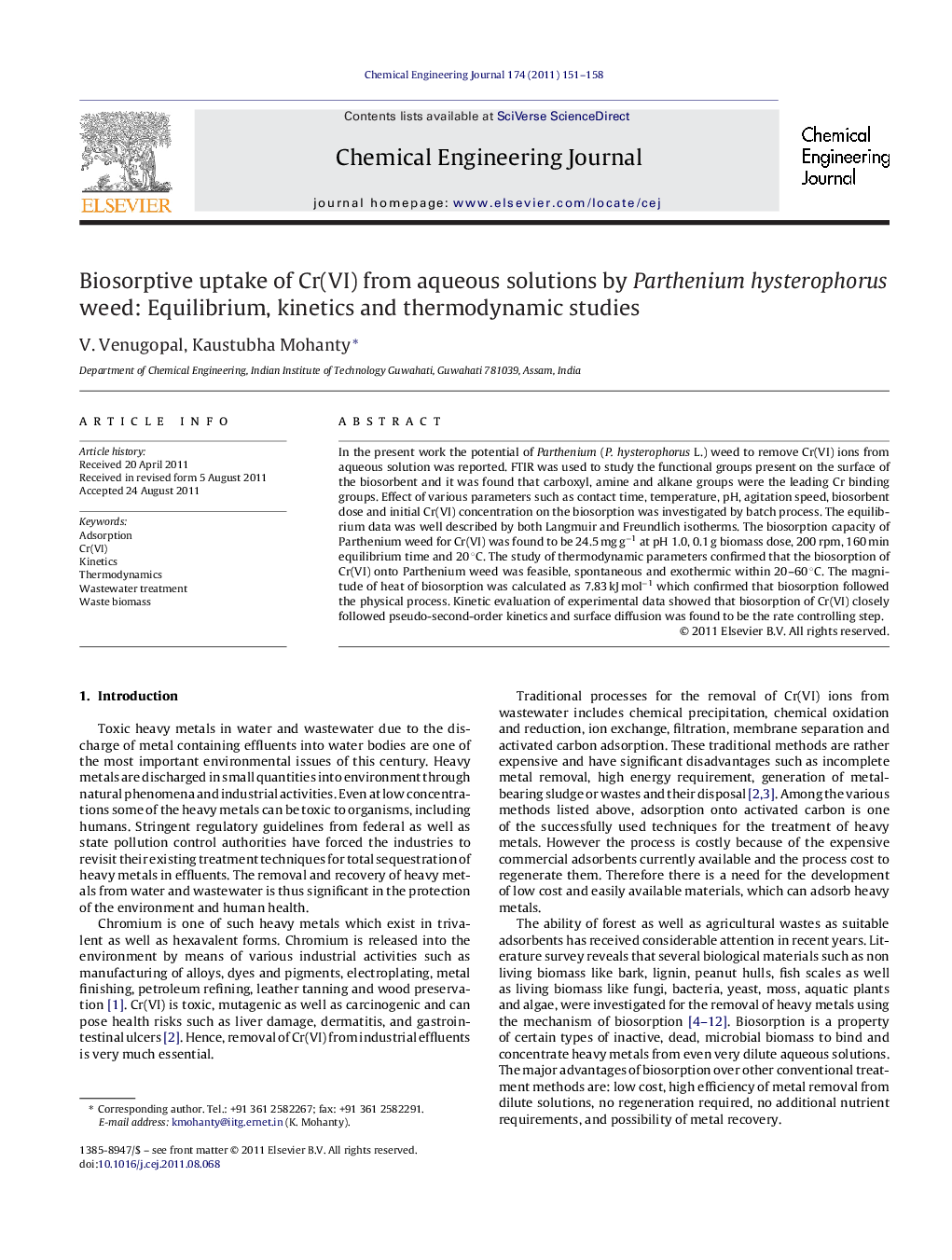| کد مقاله | کد نشریه | سال انتشار | مقاله انگلیسی | نسخه تمام متن |
|---|---|---|---|---|
| 150516 | 456451 | 2011 | 8 صفحه PDF | دانلود رایگان |

In the present work the potential of Parthenium (P. hysterophorus L.) weed to remove Cr(VI) ions from aqueous solution was reported. FTIR was used to study the functional groups present on the surface of the biosorbent and it was found that carboxyl, amine and alkane groups were the leading Cr binding groups. Effect of various parameters such as contact time, temperature, pH, agitation speed, biosorbent dose and initial Cr(VI) concentration on the biosorption was investigated by batch process. The equilibrium data was well described by both Langmuir and Freundlich isotherms. The biosorption capacity of Parthenium weed for Cr(VI) was found to be 24.5 mg g−1 at pH 1.0, 0.1 g biomass dose, 200 rpm, 160 min equilibrium time and 20 °C. The study of thermodynamic parameters confirmed that the biosorption of Cr(VI) onto Parthenium weed was feasible, spontaneous and exothermic within 20–60 °C. The magnitude of heat of biosorption was calculated as 7.83 kJ mol−1 which confirmed that biosorption followed the physical process. Kinetic evaluation of experimental data showed that biosorption of Cr(VI) closely followed pseudo-second-order kinetics and surface diffusion was found to be the rate controlling step.
► A new biosorbent was developed from waste weed of Parthenium.
► Biosorbent developed was low-cost and renewable in nature.
► It was used successfully for removal of Cr(VI) ions from aqueous solutions.
► Maximum adsorption was found to be 24.5 mg g−1 at optimized conditions.
► The developed biosorbent has the potential of removing Cr(VI) in an environmentally friendly process.
Journal: Chemical Engineering Journal - Volume 174, Issue 1, 15 October 2011, Pages 151–158